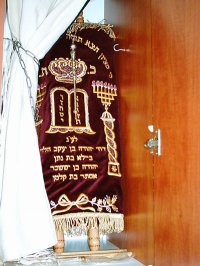Starting today - Monday - Sephardim started saying סְלִיחוֹת before שַׁחֲרִית and will continue doing so the entire month of אֱלוּל until עֶרֶב יוֹם הַכִּפּוּרִים.
This year סְלִיחוֹת - for Ashkenazim - starts on Sunday (22 Elul / 2 September), 9 days before רֹאשׁ הַשָּׁנָה.
סְלִיחוֹת usually start the Sunday before רֹאשׁ הַשָּׁנָה, however, we need at least 4 days of סְלִיחוֹת. So this year - since רֹאשׁ הַשָּׁנָה is on Monday-Tuesday, we start a week earlier.
The סְלִיחוֹת should be said before Shacharit, towards the end of the night. The end of the night is an עֵת רָצוֹן; an auspicious time when Hashem is more receptive to listening to one's prayers.
When arising for סְלִיחוֹת one should wash one's hands even if it's still night, and make the Bracha עַל נְטִילַת יָדַיִם.
One should also say the 2 Brachot of בִּרְכַּת הַתּוֹרָה before saying סְלִיחוֹת.
After Selichot one should wash one's hands again (if the first washing was pre-dawn), but one does not repeat the Bracha.
One should preferably stand during סְלִיחוֹת. During the "Kel Melech", 13 Middot and the Viddui one must stand.
The Chazzan for סְלִיחוֹת should preferably be a Torah Scholar, well liked and if possible married with children and over 30 years of age. However, any Jew can be a Chazzan as long as the community approves. The same applies to the Chazzan for רֹאשׁ הַשָּׁנָה and Yom Kippur as well as the person blowing the Shofar.
סְלִיחוֹת are not said on Shabbat.
Source: Shulchan Aruch 581, 4, 5, 6
Ktiva Vechatima Tova; may all your prayers be answered,
Chodesh Tov
- Danny
Monday, 2 Elul 5778
מִיּוֹם רִאשׁוֹן [בַּשַׁבָּת] שֶׁקֹּדֶם רֹאשׁ הַשָּׁנָה וָאֵילָךְ, מַשְׁכִּימִין לִסְלִיחוֹת
וְאִם חָל רֹאשׁ הַשָׁנָה בְּיוֹם שֵׁנִי אוֹ בְּיוֹם שְׁלִישִׁי, מַתְחִילִין מִיּוֹם רִאשׁוֹן בַּשָּׁבוּעַ הַקֹּוֹדֵם
וּכְשֶׁמַּשְׁכִּימִין, צְרִיכִין לִטּוֹל יְדֵיהֶם וּלְבָרֵךְ עַל נְטִילַת יָדַיִם וּבִרְכַּת הַתּוֹרָה. וְאַחַר הַסְּלִיחוֹת יִטּוֹל יָדָיו שֵׁנִית בְּלֹא בְּרָכָה
שְּׁלִיחַ הַצִבּור שֶׁאוֹמֵר סְלִיחוֹת, יִתְעַטֵּף בְּטַלִּית מְצֻיֶּצֶת קֹדֶם שֶׁמַּתְחִיל אַשְׁרֵי. וּלְפִי שֶׁיֵשׁ סָפֵק אִם יְבָרֵךְ בְּרָכָה עַל טַלִּית שֶׁלּוֹ כְּשֶׁלּוֹבְשׁוֹ בַּלַּיְלָה אוֹ לֹא יְבָרֵךְ, עַל כֵּן לֹא יִטֹל אֶת שֶׁלוֹ, וְגַם לֹא טַלִּית הַקָּהָל, אֶלָּא יִשְׁאַל לוֹ טַלִּית מֵאַחֵר. וְאִם אֵין בַּנִּמְצָא טַלִּית כְּלָל, יְכוֹלִין לוֹמַר סְלִיחוֹת וּשְׁלשׁ עֶשְׂרֵה מִדּוֹת גַּם בְּלֹא טַלִּית
יֵשׁ מְקוֹמוֹת נוֹהֲגִין שֶׁהַמִּתְפַּלֵּל סְלִיחוֹת, מִתְפַּלֵּל גַּם שַׁחֲרִית וּמִנְחָה וְגַם מַעֲרִיב שֶׁלְּפָנָיו, וְהוּא קוֹדֵם לְאָבֵל וּלְמוֹהֵל וּלְ"יָאר צַייט" [לְבַעַל יוֹם זִכָּרוֹן]
טוֹב לַעֲמֹד בַּאֲמִירַת הַסְּלִיחוֹת. וּמִי שֶׁקָּשֶׁה לוֹ, יַעֲמֹד לְכָל הַפָּחוֹת בַּאֲמִירַת אֵ-ל מֶלֶךְ יוֹשֵׁב וְגוֹ' וּשְׁלֹש עֶשְׂרֵה מִדּוֹת
יְדַקְדְּקוּ לִבְחוֹר שְּׁלִיחַ צִבּוּר שֶׁיִּתְפַּלֵּל סְלִיחוֹת וּבַיָמִים הַנוֹרָאִים, אִישׁ שֶׁהוּא הָגוּן וְגָדוֹל בַּתוֹרָה וּבְמַעֲשִׂים טוֹבִים, כְּפִי מַה שֶּׁאֶפְשָׁר לִמְצֹא. וְגַם שֶׁיִּהְיֶה בֶּן שְׁלֹשִׁים שָׁנָה, שֶׁאָז כְּבָר נָחָה רְתִיחַת הַדָּם שֶׁל בַּחֲרוּתוֹ וְנִכְנַע לִבּוֹ. וְגַם יְהֵא נָשׂוּי וְיִהְיוּ לוֹ בָּנִים, שֶׁהוּא שׁוֹפֵךְ לִבּוֹ וּמַפִּיל תַּחֲנוּנִים מִקִּירוֹת הַלֵּב. וְכֵן יְדַקְדְּקוּ לִבְחוֹר תּוֹקֵעַ שֶׁיִּתְקַע שׁוֹפָר בְּרֹאשׁ הַשָּׁנָה, וְכֵן הַמַּקְרֶא לִפְנֵי הַתּוֹקֵעַ, שֶׁיִּהְיוּ בַּעֲלֵי תּוֹרָה וְיִרְאָה, כְּפִי מַה שֶּׁאֶפְשָׁר לָהֶם לִמְצֹא
מִיהוּ כָּל יִשְֹרָאֵל כְּשֵׁרִים לַכֹּל, רַק שֶׁיְהֵא מְרֻצֶּה לַקָּהָל. וְאִם רוֹאֶה מַחֲלֹקֶת בַּדָּבָר, יִמְנַע עַצְמוֹ אַף עַל פִּי שֶׁיִּהְיֶה מִי שֶׁאֵינוֹ הָגוּן


